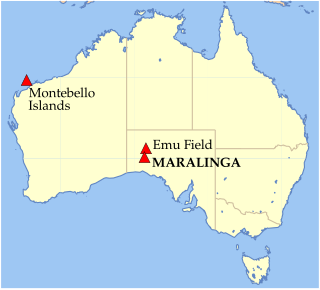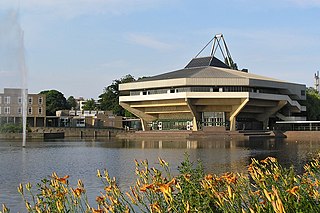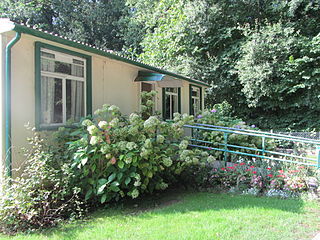 W
WClement Attlee was invited by King George VI to form the Attlee ministry in the United Kingdom in July 1945, succeeding Winston Churchill as Prime Minister of the United Kingdom. The Labour Party had won a landslide victory at the 1945 general election, and went on to enact policies of what became known as the post-war consensus, including the establishment of the welfare state and the nationalisation of some industries. The government's spell in office was marked by post-war austerity measures, the grant of independence to India, and engagement in the Cold War against Soviet Communism.
 W
WBevanism was the ideological argument for the Bevanites, a movement on the left wing of the Labour Party in the late 1950s and typified by Aneurin Bevan. Also called 'the Old Left', it was named after its dominant personality; however its intellectual direction was given by Richard Crossman and his followers including Michael Foot and Barbara Castle. Bevanism was opposed by the Gaitskellites, who are variously described as centre-left, social democrats, or "moderates" within the party. The Gaitskellites typically won most of the battles inside Parliament, but Bevanism was stronger among local Labour activists. Bevanites split over the issue of nuclear weapons, and the movement faded away after Bevan died in 1960.
 W
WBritish nuclear tests at Maralinga were conducted between 1956 and 1963 at the Maralinga site, part of the Woomera Prohibited Area in South Australia about 800 kilometres (500 mi) north west of Adelaide. A total of seven nuclear tests were performed, with approximate yields ranging from 1 to 27 kilotons of TNT. Two major test series were conducted at the Maralinga site: Operation Buffalo in 1956 and Operation Antler the following year. Operation Buffalo consisted of four tests; One Tree and Breakaway were detonated on towers, Marcoo at ground level, and the Kite was released by a Royal Air Force (RAF) Vickers Valiant bomber from a height of 11,000 metres (35,000 ft). This was the first drop of a British nuclear weapon from an aircraft.
 W
WThe Cambridge Spy Ring was a ring of spies in the United Kingdom that passed information to the Soviet Union during World War II and was active from the 1930s until at least into the early 1950s. None were ever prosecuted for spying. The number and membership of the ring emerged slowly from the 1950s onwards. As far as the general public was concerned, this started with the sudden flight of Donald Maclean and Guy Burgess to the Soviet Union in 1951. Suspicion immediately fell on Harold "Kim" Philby, but he did not defect until 1963. Anthony Blunt and John Cairncross, the last two of the group, confessed to British intelligence but this remained a secret for many years, until 1979 for Anthony Blunt and 1990 for John Cairncross. In time the Cambridge Four evolved to become the Cambridge Five. In the innermost circles of the KGB, they were supposedly dubbed as the Magnificent Five.
 W
WWinston Churchill formed the third Churchill ministry in the United Kingdom after the 1951 general election. He was reappointed as Prime Minister of the United Kingdom by King George VI and oversaw the accession of Queen Elizabeth II in 1952 and her coronation.
 W
WThe Conservative government of the United Kingdom that began in 1957 and ended in 1964 consisted of three ministries: the first Macmillan ministry, second Macmillan ministry, and then the Douglas-Home ministry. They were led by Harold Macmillan and Sir Alec Douglas-Home, who were appointed respectively by Queen Elizabeth II.
 W
WThe Eden ministry was formed following the resignation of Winston Churchill in April 1955. Anthony Eden, then-Deputy Prime Minister and Foreign Secretary, took over as Leader of the Conservative Party, and thus became Prime Minister of the United Kingdom. Upon assuming office, Eden asked Queen Elizabeth II to dissolve parliament and called a general election for May 1955. After winning the general election with a majority of 60 seats in the House of Commons, Eden governed until his resignation on 10 January 1957.
 W
WGaitskellism was the ideology of a faction of the British Labour Party in the 1950s and early 1960s. It opposed many of the economic policies of the trade unions, especially regarding nationalisation and controlling the economy for the benefit of unions.
 W
WHomemaker was a pattern of mass-produced earthenware tableware that was very popular in the United Kingdom in the 1950s and 60s. The pattern was designed by Enid Seeney, manufactured by Ridgway Potteries of Stoke-on-Trent between 1957 and 1970, and sold exclusively through Woolworth's stores.
 W
WThis is an incomplete list of Acts of the Parliament of the United Kingdom for the years 1940–1959. Note that the first parliament of the United Kingdom was held in 1801; parliaments between 1707 and 1800 were either parliaments of Great Britain or of Ireland. For Acts passed up until 1707 see List of Acts of the Parliament of England and List of Acts of the Parliament of Scotland. For Acts passed from 1707 to 1800 see List of Acts of the Parliament of Great Britain. See also the List of Acts of the Parliament of Ireland.
 W
WThe term plate glass university or plateglass university refers to a group of universities in the United Kingdom established or promoted to university status in the 1960s. The original plate glass universities were established following decisions by the University Grants Committee (UGC) in the late 1950s and early 1960s, prior to the Robbins Report in 1963. However, the term has since expanded to encompass the institutions that became universities as a result of Robbins's recommendations.
 W
WPrefabs were a major part of the delivery plan to address the United Kingdom's post–Second World War housing shortage. They were envisaged by war-time prime minister Winston Churchill in March 1944, and legally outlined in the Housing Act 1944.